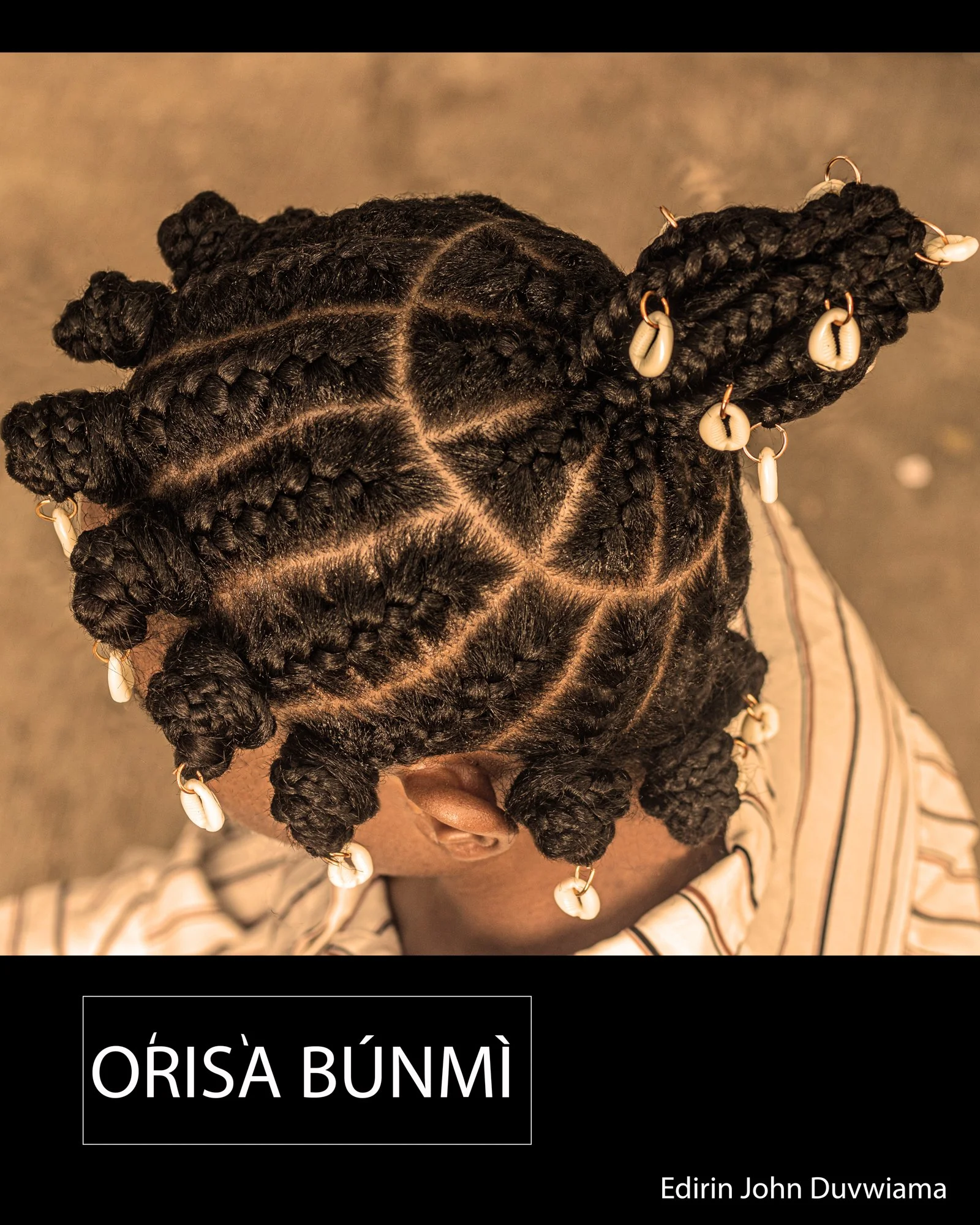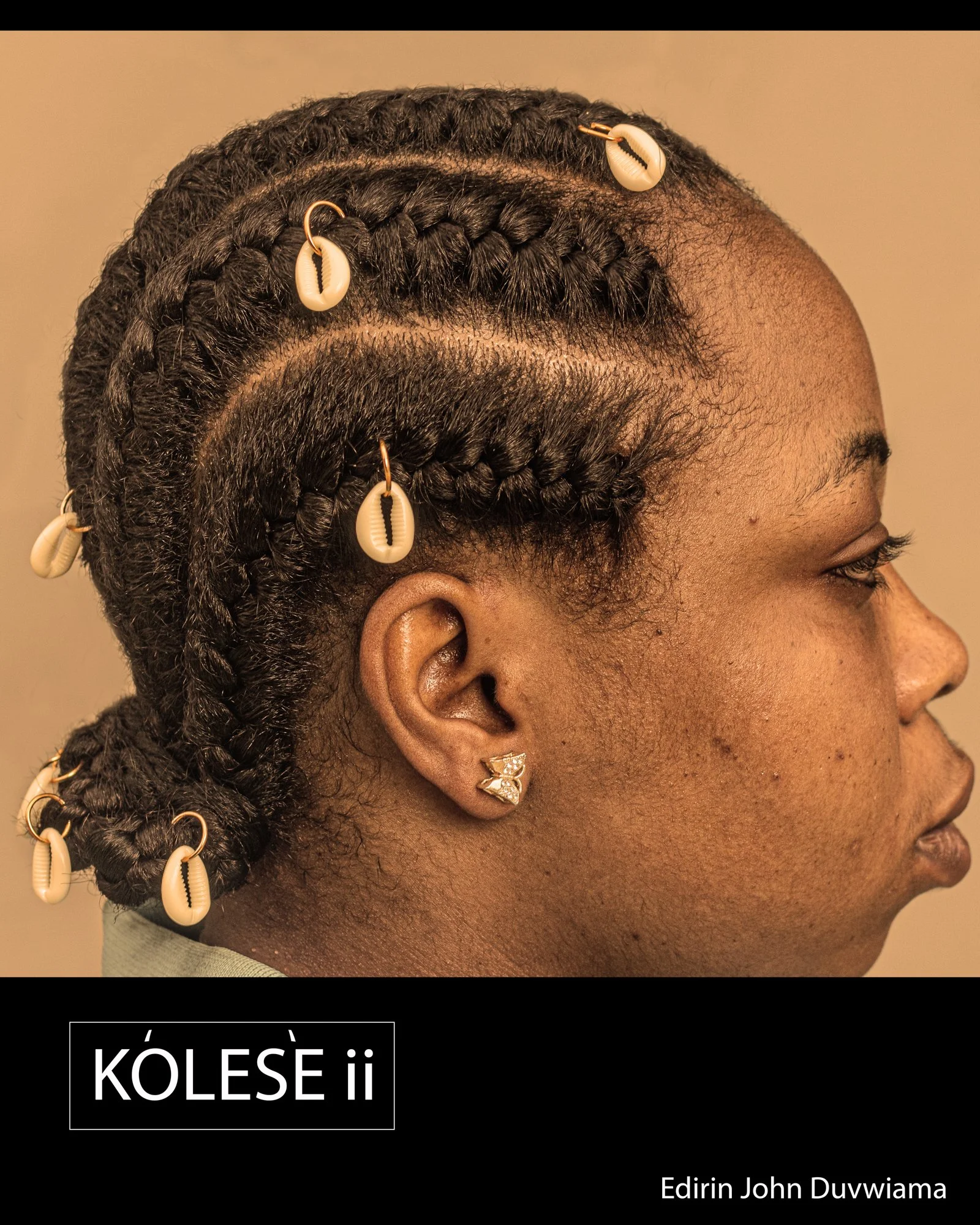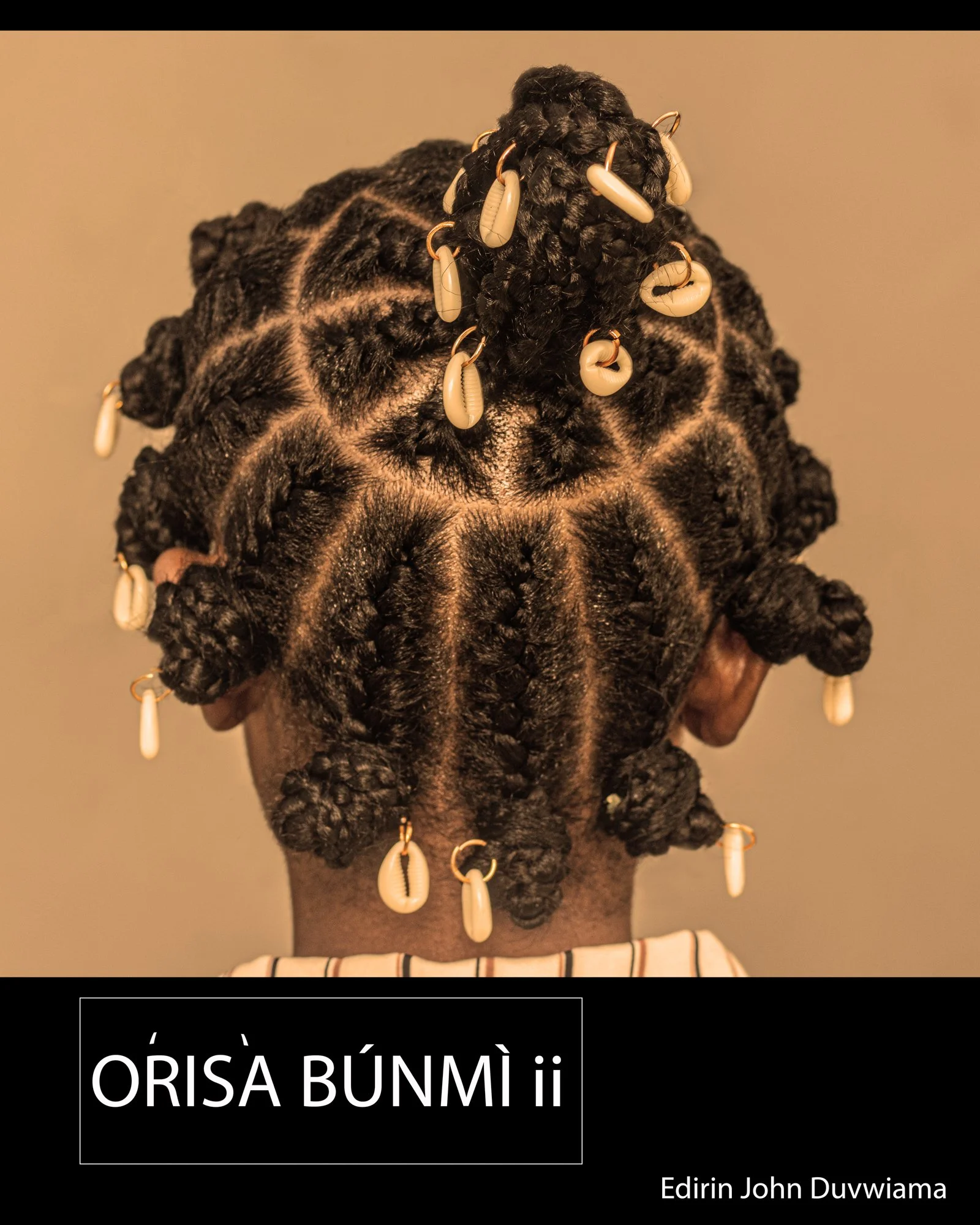“Crowning Glory: Edirin John Duvwiama’s Ode to Yoruba Hair Artistry”
Edirin John Duvwiama’s Yoruba Hair is a stunning tribute to African hair culture, particularly the rich traditions of Yoruba women’s hairstyles. Through a series of captivating images, Edirin draws attention to the intricate beauty, cultural significance, and artistry embedded in African hair—a subject that is often overlooked in favor of more Westernized beauty standards.
At first glance, Yoruba Hair is an exploration of style and creativity. Each hairstyle featured in the series is a testament to the versatility of African hair and its ability to adapt to a variety of intricate designs. The texture of the hair, which lends itself so effortlessly to braiding, twisting, and sculpting, becomes a medium for artistic expression. But beneath the surface, this series does much more than showcase hairstyles; it tells a story of heritage, identity, and the shifting tides of cultural appreciation.
Edirin’s work feels like a time capsule, transporting us back to a time when these hairstyles were celebrated as the norm in Nigeria, particularly up until the 1990s. The nostalgic tones of the images evoke sweet memories of an era when these styles were not only popular but also symbols of pride and cultural expression. However, the advent of European wigs and Western beauty ideals gradually pushed these hairstyles to the margins, threatening their survival.
What makes this series remarkable is its ability to remind viewers of the deeper significance behind these hairstyles. In Yoruba culture, the head (orí) holds profound spiritual meaning—it is considered the seat of destiny and the most important part of the body. Beautifying the hair, therefore, is not merely an act of personal grooming but a way of honoring oneself and one’s destiny. Each hairstyle carries its own cultural weight, communicating messages about status, identity, and tradition.
Edirin’s decision to focus solely on the hairstyles, leaving the viewer to marvel at their intricate designs, is both deliberate and powerful. It forces us to confront how much of this art form has been lost to Western influence and how little appreciation remains for these cultural masterpieces. These are not merely hairstyles; they are sculptures, works of art crafted by skilled hands, and expressions of African ingenuity.
The series also raises a sobering point about the future of this cultural practice. With only a small number of artisans still specializing in these traditional Yoruba hairstyles, their survival is at risk. However, there is hope. As younger generations increasingly reconnect with their roots and embrace African culture, perhaps a revival of these hairstyles will take hold. Yoruba Hair serves as a call to action—not just to appreciate these styles but to preserve and celebrate them before they fade into obscurity.
Edirin John Duvwiama’s Yoruba Hair is more than just an art series; it is a love letter to African culture and a reminder of the beauty and value of our heritage. The series challenges us to see these hairstyles as they truly are—masterpieces of art and symbols of identity that deserve to be celebrated, cherished, and passed down to future generations.



























